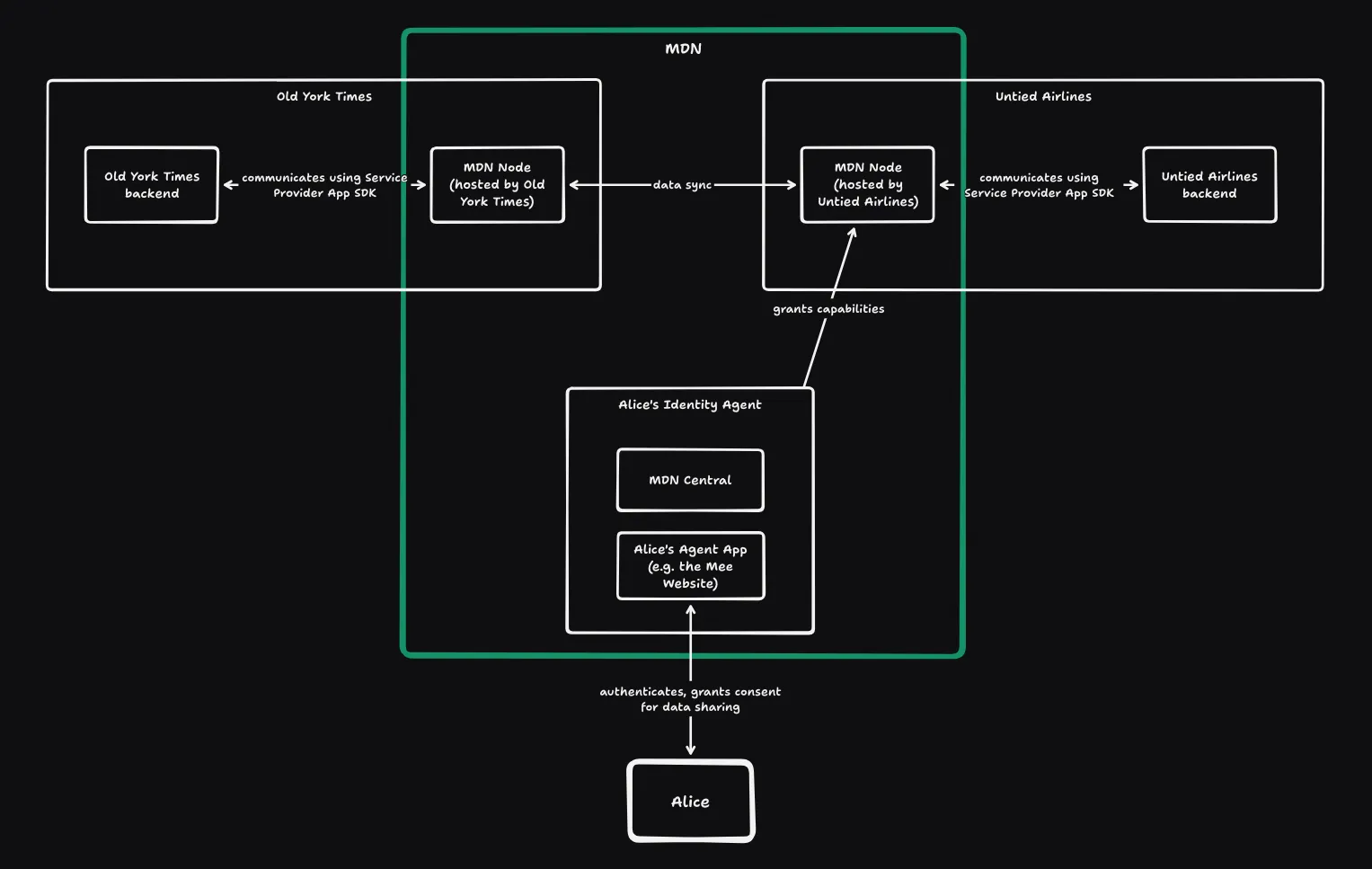Core components
Example Use Case
Consider a user Alice connecting to the Untied Airlines app for the first time. The app is MDN-compatible, meaning it participates in the Mee Data Network. When Alice logs in:
- She authenticates using her Mee Identity via her Agent App (e.g. the Mee Website or the Mee Smartwallet)
- Alice’s Identity Agent grants Untied Airlines capabilities for maintaining their Identity Context (a private space for Alice’s airline-related data).
- Untied Airlines creates an Identity Context. The Identity context is owned by Alice and she retains the ability to read, update or delete the data.
- The app queries Alice’s Identity Agent for the data it requires (like the birth date or payment information).
- Let’s say Alice has previously shared payment information with Old York Times. Alice consents to sharing this data with Untied Airlines via her Agent App.
- Alice’s Identity Agent authorizes data sharing between OYT and Untied and grants the corresponding capability tokens to Untied.
- Data flows directly between the two apps’ MDN Nodes.
Here’s a basic overview of participants in this flow

Component Architecture
The MDN consists of three primary components that enable secure data sharing:
MDN Central
Coordinates the network without accessing personal data. Maintains:
- MDN User Accounts (like Alice’s, representing a Mee Identity)
- MDN Custodian Accounts (representing data holders)
- Node directory and discovery service
- Capability token distribution
MDN Central does not store personal data - it only manages the metadata necessary for network operation and coordination.
Custodians
Each participant (user or provider) has a Custodian Account that:
- Owns one or more MDN Nodes
- Receives capability tokens
- Manages data sharing relationships
For example:
- Alice has a Custodian Account owning her phone and desktop Nodes
- OYT has a Custodian Account owning their cloud Node
- Untied Airlines has their own Custodian Account and Node
MDN Nodes
Store and sync personal data. Types:
- Provider-hosted (like OYT’s cloud Node)
- User-owned (in Alice’s Mee Smartwallet)
Each Node:
- Belongs to exactly one Custodian
- Stores Identity Contexts
- Maintains capability tokens and handles data access
- Directly synchronises data with other Nodes
Core concepts
Mee Identities
A Mee Identity is represented by the User’s account in the Mee Data Network. Each identity consists of:
- A unique identifier
- Authentication credentials
- Associated Custodian Accounts
- Associated MDN Nodes
- Assigned capabilities for managing Identity Contexts
The identity is known to the user and their respective Agent Apps. A Service Provider cannot have a Mee Identity.
Identity Contexts
An Identity Context represents a relationship between a User and a Provider (or another User). Each context has its own scoped identity that is generated uniquely for each context and cannot be correlated across different contexts.